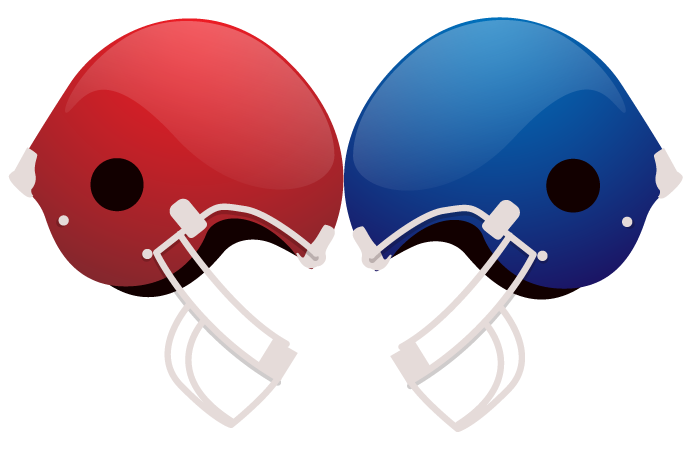-
Mark Fainaru-Wada
Close ESPN Staff Writer
ESPN Staff Writer- Investigative reporter for ESPN’s Enterprise and Investigative Unit since 2007
- Co-author of New York Times best-selling books “League of Denial” and “Game of Shadows”
- Co-winner, 2004 George Polk Award
-
Steve Fainaru
Close ESPN Senior Writer
ESPN Senior Writer- Winner, 2008 Pulitzer Prize in International Reporting
- Four-time first-place winner in Associated Press Sports Editors competition
- Co-author of New York Times best-selling book, “League of Denial”
Nearly five years ago, the NFL donated $30 million to the National Institutes of Health for brain research, an initiative that commissioner Roger Goodell touted as a demonstration of the league’s commitment to fund independent science exploring the link between football and brain disease. But the marriage between the NFL and the government agency appears headed for a divorce.
NIH officials decided months ago to let the agreement expire in August with more than half of the money unused, following a bitter dispute in 2015 in which the NFL backed out of a major study that had been awarded to a researcher who had been critical of the league, Outside the Lines has learned.
The expected NFL-NIH breakup would mark an uneasy conclusion to an initiative often billed as the largest single donation in NFL history. In the end, the NIH has signaled its willingness to leave approximately $16 million on the table, a measure of the mistrust that built up following the league’s unsuccessful efforts to rescind funding awarded to a group led by Robert Stern, a Boston University neuroscientist.
A statement released Thursday by the NIH, previous comments from agency officials, and information provided by sources to Outside the Lines all point to the NIH severing its ties to the NFL.

Research on 202 former football players found evidence of the brain disease CTE in nearly all of them, from NFL players to high school athletes.
-
Ravens offensive lineman John Urschel abruptly announced his retirement from football at age 26, just before the first full-team practice of training camp.
1 Related
“The NFL’s agreement with [the funding arm of the NIH] ends August 31, 2017, and there are no current research plans for the funds remaining from the original $30 million NFL commitment,” the NIH’s statement reads. “NIH is currently funding concussion research directly.
“If [the] NFL wishes to continue to support research at NIH, a simple donation to the NIH Gift Fund to support research on sports medicine would be favorably viewed, as long as the terms provided broad latitude in decisions about specific research programs.”
Under the original partnership with the NFL, the league retained veto power over how its $30 million donation could be used.
On Wednesday — one day after Boston University researchers reported finding neurodegenerative disease in the brains of 110 of 111 former NFL players — ranking Democrats from the House Committee on Energy and Commerce sent a letter to Goodell asking how the league planned to “follow through with its commitment to the NIH.”
The NFL responded that league officials are “engaged in constructive discussions” with the NIH’s fundraising arm “regarding potential new research projects and the remaining funds of our $30 million commitment,” according to a statement released by the league.
Asked Thursday if it were considering donating money to the NIH Gift Fund, a league spokesman referred back to Wednesday’s statement.
The NIH’s statement on Thursday does not mention any ongoing discussions with the NFL, however, and a spokesperson for the NIH’s fundraising arm said while it suggested a donation to the Gift Fund, it is not involved in such transactions.
In late June, NIH spokesman John Burklow told Outside the Lines that he was unaware of any discussions to renew or extend the $30 million contract with the league.
“If you asked me what happened with the agreement, there’s no action that I’m aware of. So it ends in August,” he told Outside the Lines then. “… I have not heard of any plans to use the remaining funds.”
In an interview last month, Patrick Bellgowan, a program director for the National Institute of Neurological Disorders and Stroke, a branch of the NIH, told Outside the Lines: “Right now, we are funding all of our concussion research independently.”
House Energy and Commerce ranking member Frank Pallone Jr., D-N.J., — a co-author on the letter sent to the NFL — said Thursday “it’s disappointing that the NFL’s inappropriate actions soured the relationship to the point where it appears that NIH couldn’t see a path forward. However, at a time when there’s a desperate need for research dollars, I strongly encourage the NIH and NFL to work to use the remaining funding that the NFL committed to support critical research that could help protect current, former and future football players.”
The NFL announced its $30 million “unrestricted gift” to the NIH in September 2012 — four months after San Diego Chargers great Junior Seau committed suicide by shooting himself in the chest. Goodell billed the donation as an effort to fund independent research that would get to the bottom of the link between football and brain damage — a connection that the league had denied for nearly two decades.
The NIH said the money came “with no strings attached.”
By 2013, the NIH had begun to distribute the NFL money for peer-reviewed research. The NIH awarded two $6 million grants for a “comprehensive investigation” into chronic traumatic encephalopathy, or CTE, and six pilot studies totaling $2 million. One of the recipients of the larger grants was Boston University neuropathologist Dr. Ann McKee — a colleague of Stern’s — whose research produced the announcement this week that 110 of 111 former deceased NFL players had CTE.
McKee, who has clashed with the NFL over her conclusions, also has described the league’s funding as “an absolute lifeline for my work.”
The dispute over the $16 million grant awarded to a group to be led by Stern erupted in late 2015. The money was earmarked for research to find CTE in living patients; the disease currently can only be diagnosed post-mortem. According to reporting by Outside the Lines and a separate congressional report, several NFL health officials tried to persuade the NIH to rescind the award, including Jeff Miller, the NFL’s senior vice president for health and safety; Dr. Richard Ellenbogen, co-chairman of the Head, Neck and Spine Committee; and Dr. Mitch Berger, chairman of the subcommittee on the long-term effects of brain and spine injury. The NFL tried to redirect the funding to a group that included researchers affiliated with the league, the congressional report concluded.
The May 2016 report, issued by Democrats from the House Committee on Energy and Commerce following a months-long investigation, concluded that despite a signed agreement with the NIH, the NFL backed out of funding the seven-year, longitudinal study when it learned that Stern would be the lead researcher.
In public statements and written responses to the committee, the NFL repeatedly denied it withheld funding but argued that the NIH selection process was tainted by Stern’s bias and a conflict of interest involving a reviewer. The league maintained it had been prepared to fund a portion of the study but that it was told the NIH decided to use public funds instead. The report stated that the NFL made a last-minute offer of $2 million — a fraction of its original commitment — but was turned down by NIH Director Dr. Francis Collins.
Shortly after that controversy, the NFL announced a new commitment to spend $100 million toward concussion research and innovation. That money is administered by the league.
Four months after the Democrats’ report, Republican leaders from the Energy and Commerce committee called for an independent review of the controversy — with particular attention to whether the NIH mishandled the situation.
The status of the review is unclear.
In February 2016, a few months after the conflict had played out, NIH officials notified the NFL that it planned to initiate concussion research focused on youth and suggested the league could support this work. Miller, the NFL’s chief health and safety officer, was noncommittal, suggesting that the NIH pursue a longitudinal study, as the two parties had agreed upon earlier.
NIH officials responded in an email that they were “puzzled” by Miller’s email. They noted that this was the research they had already funded — through Stern’s group — using taxpayer money after the NFL backed out of the deal.












